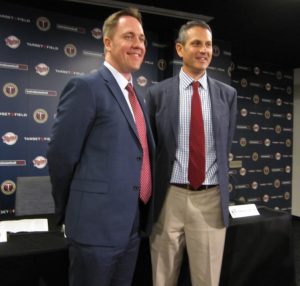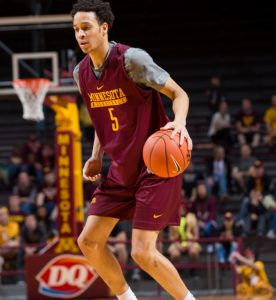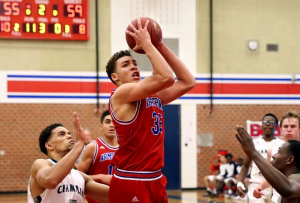A Sunday notes column with the Twins leading off:
The Twins are a surprise contender for the American League Central Division title, and this morning were only a half game out of first place. The turnaround from 2016 when Minnesota finished with a 59-103 record doesn’t predict, however, whether the front office will be buyers or sellers at the trade deadline July 31.
Club president Dave St. Peter told Sports Headliners on Friday it’s too early to determine what direction the franchise will go with its roster by the end of July, and even in August when MLB teams can still make moves through waiver deals. He made it clear that whatever course the club determines will be decided by Derek Falvey, the chief baseball officer who was hired last fall.
“We’ll try to do what’s best for our club,” St. Peter said. “I have great confidence in Derek Flavey to lead that decision making process. … It’s a little early to get into where we stand in that. Obviously our club has been competitive but it’s also obvious we have a lot of work to do.”

Falvey and others involved with the Twins leadership, including general manager Thad Levine, are taking a long-term view in rebuilding the franchise. While it’s a positive to be playing above .500 with a 38-34 record, the goal is to become a consistent winner that can deliver championships. The Twins have holes on their roster, including at times an alarming lack of quality pitching. The farm system only has a couple of prospects who will make top 100 lists of baseball’s most promising players.
“There are a lot of positives with this (current roster) group of players,” St. Peter commented. “That said, we’ve also seen challenges and we need to find ways to get better. I am optimistic that Derek is going to explore every avenue going forward, and not just in the short-term but probably more importantly over the long-term.”
On July 22 the Twins celebrate the 30th anniversary of their 1987 World Series championship team during a pregame ceremony at Target Field before Minnesota plays the Tigers. That Twins won the first world title by a Minnesota pro sports team since the 1954 Minneapolis Lakers were NBA champs.
The 1965 Twins were in the World Series, the 1981 North Stars reached the Stanley Cup Finals, and the Vikings lost four times in Super Bowls in the 1970s, but St. Peter said Upper Midwest sports fans are “eternally grateful to that group (the ’87 Twins) for actually bringing home a world championship.”
The ’87 team wasn’t a preseason favorite to reach the World Series. Part of the love affair for fans with that team was how they surprised most everyone with their success. “It’s by far, in my opinion, the most popular group-team in Minnesota sports history,” said St. Peter who expects many members of the team to be in Minneapolis for the reunion.
Earlier this year the Twins’ Eduardo Escobar represented the club in a cow milking contest against the Angels’ Blake Parker in Anaheim. St. Peter said a milking contest could be part of his franchise’s plans for next season and help celebrate agriculture.
Asked about potential Twins to participate, St. Peter identified Escobar and Chris Gimenez who he said was known as a “decent milker” while participating in cow milking with other clubs. Years ago the promotion was popular at Met Stadium.
It’s not believed (just kidding) cow milking skills or experience will be factors in determining the Twins’ roster coming out of spring training in 2018.
Longtime Wolves followers might wonder about the reported relationship between Jimmy Butler and coach Fred Hoiberg during the last two seasons in Chicago. Butler, the All-Star small forward traded to the Wolves last week, was apparently critical and challenging of Hoiberg’s coaching. Hoiberg, who played for the Wolves and worked for the organization years ago, is a terrific person and classy guy.
Westgate sports book moved the Wolves from 100-1 to 60-1 to win next year’s NBA title after the Minnesota-Chicago trade, according to a Friday online story by Todd Dewey for the Las Vegas Review–Journal. The Bulls’ odds went from 100-1 to 200-1.
Athlon Sports is celebrating 50 years since its inception and its Big Ten football magazine now on newsstands includes a feature ranking the 50 top college players dating back to 1967. Minneapolis’ Larry Fitzgerald Jr., the wide receiver who played at Pittsburgh, is No. 23. Former Vikings wide receiver Randy Moss, who scored at least one touchdown in each of his college games at Marshall, is No. 22. Running back Herschel Walker, who also played for the Vikings and won the Heisman Trophy while leading Georgia to the national championship, is No. 1 on the list.
Teddy Bridgewater’s rehabilitation of his knee is ongoing but optimism about his chances of playing quarterback again for the Vikings is more certain than several months ago.
Jennifer Hines, tournament director for the 3M Championship, is one of three women in the country directing PGA tournaments. Another director is Hines’ sister, Tracy West, with the Valspar Championship in Palm Harbor, Florida.
This year’s 3M Championship is July 31-August 6 at TPC Twin Cities in Blaine. Jack Nicklaus will be among the golf legends expected to play in a special event. Joe Durant won the tournament last year. Admission is free all week.
Creative Charters, the Stillwater-based fan tour company, is offering a package with more than football for the Gophers game on September 9 in Corvallis against Oregon State. The trip includes activities on the Oregon coast with fishing, whale watching, wine tasting and more. Details at Creativecharter.com.
The 29th annual Bruce Smith Golf Classic last Monday at Faribault Golf Club included former Gophers Seth Helgeson, Darrell Thompson and Ben Utecht. The fundraising event benefits Faribault schools and has generated about $225,000 over the years. It honors Bruce Smith, the Faribault native who won the 1941 Heisman Trophy playing for the Gophers.
Kaitlin Langer, who finished her senior season at St. Thomas as the D3Hoops.com Player of the Year, majored in real estate studies and is “affiliated with a RE/MAX office in Rosemount,” according to the latest issue of the University of St. Thomas magazine.
Comments Welcome





